So I'm trying to solve a problem I found in a textbook (won't say which one so people can't use it to cheat on their hw) and I haven't been able to arrive at the answer found in the appendix. Please note this is not a homework problem, I graduated from college last year and just reviewing for my own benefit and so I can finish an analog MPPT controller I'm designing.
The problem:

simulate this circuit – Schematic created using CircuitLab
Assume each mosfet in the above figure is biased so gm = 4mA/V and that the ro of each mosfet can be ignored. Find the loop gain AB assuming the value for RF is 900 Ohms (the value I calculated for making the closed-loop gain ideally (1/B) 10V/V in the first part of the problem, which is correct)
My attempt at an answer
I used the test-voltage method, where a break is made in the feedback loop and a test voltage is applied and then measured at the other end with t-model for Mosfets:
$$I_{o} = g_{m}V_{T}$$ $$I_{D1} = I_{F}\frac{R_{S1}}{R_{S1} + 1/g_{m}}$$
$$I_{F} = I_{o}\frac{R_{S2}}{R_{S2} + R_{F} + R_{S1} || 1/g_{m}}$$
$$I_{D1} = \frac{g_{m}V_{T}R_{S2}}{R_{S2} + R_{F} + R_{S1} || 1/g_{m}} \cdot \frac{R_{S1}}{R_{S1} + 1/g_{m}} $$
Output voltage of M1: $$V_{o1} = I_{D1}R_{D1}$$ Voltage at opposite end where feedback loop broken: $$V_{r} = -g_{m}V_{o1}R_{D2} = -g_{m}I_{D1}R_{D1}R_{D2}$$
Loop Gain (Where Vt is test voltage): $$A\beta = -\frac{V_{r}}{V_{T}}$$ $$A\beta = \frac{g_{m}^{2}R_{D1}R_{D2}R_{S1}R_{S2}}{R_{S2} + R_{F} + R_{S1} || 1/g_{m} \cdot (R_{S1} + 1/g_{m})} $$
However, this gives me the wrong answer, the value for loop gain should be 31.33 according to the appendix.
I must be doing something wrong in calculating the voltage gain of each stage but I haven't been able to wrap my head around it. Any insight in how to approach the problem and some background I might be lacking would be highly appreciated. Guess I'm a little rusty on my circuit theory...
